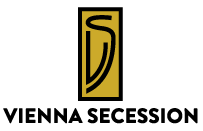Egon Schiele: Portraits
This special exhibition is devoted to portraiture created by the masterful Austrian artist Egon Schiele. This is the first exhibition at an American museum to focus exclusively on portraiture in Schiele’s work. Egon Schiele (1890-1918) is considered one of the twentieth century’s most important artists.
[hr][divider][/hr]
Austrian Portraiture in the Early Twentieth Century
The genre of portraiture underwent dramatic changes at the turn of the twentieth century. With the invention of photography, artists shifted from purely representational likenesses in favor of portraits that captured the personality and essence of the sitter. This exhibition focuses on the portraiture of Gustav Klimt and his peers.
[hr][divider][/hr]
Posters of the Vienna Secession, 1898-1918
Neue Galerie New York presents a special exhibition on posters of the Vienna Secession, focusing on the period from 1898 to 1918. The Vienna Secession was a groundbreaking artists’ association, established in 1897 under the presidency of Gustav Klimt.
[hr][divider][/hr]
Holland on Paper: The Age of Art Nouveau
MUSEUM OF FINE ARTS, Boston, USA. August 10, 2013 to February 23, 2014.
In the era of Art Nouveau, from the 1890s through the turn of the century, there was a flourishing of new, imaginative art and craft throughout Europe. Holland also saw an explosion of inventive art and design in this period, including many expressive works on paper—posters, decorative calendars, illustrated books, as well as prints and drawings. The MFA has been actively collecting these Dutch works for the last 25 years, and this exhibition highlights of 45 works early drawings by well-known artists Piet Mondrian and Bart van derLeck, as well as works by such new discoveries as Jan Toorop, Theo Nieuwenhuis, Samuel Jessurun de Mesquita, Theo Hoytema, G. W. Dijsselhof, and C. A. Lion Cachet.
[hr][divider][/hr]
Egon Schiele and his age
MUSEUM OF FINE ARTS, Budapest, Hungary. June 26, 2013 to September 29, 2013
The Museum of Fine Arts, Budapest, by way of a continuation of its exhibition presenting Gustav Klimt and the early Secession offers an insight into the work of the most outstanding artist of the following generation: Egon Schiele, and through his contemporaries into the development of Viennese Expressionism, the school that superseded Jugendstil.
[hr][divider][/hr]
The Art Nouveau collection of the Museum of Applied Arts
MUSEUM OF APPLIED ARTS, Budapest, Hungary. May 24, 2013 to September 15, 2013
The Museum of Applied Arts in Budapest presents an exhibition on Art Nouveau. The collection features the museum’s own collection of Hungarian Art Nouveau designers and manufacturers.
[hr][divider][/hr]
Neue Galerie New York presents a monographic exhibition devoted to the Austrian artist, designer, and Wiener Werkstätte co-founder Koloman Moser (1868-1918). This show surveys the sum of Moser’s decorative arts career, comprising important interior design commissions, examples of graphic design, furniture, textiles, jewelry, metalwork, glass, and ceramics, many of which are illustrated by rare preparatory drawings and prints.
[hr][divider][/hr]
Art in the Street: European Posters
MUSEUM OF FINE ARTS, Boston, USA. December 15, 2012 – July 21, 2013
The international poster mania of the 1890s made fine art accessible to the masses, bringing it out of the salon into the streets and shop windows. Great posters proliferated, however, long after this “golden age,” as revealed by the standout images in “Art in the Street” from the 1920s, ’30s, and ’40s. With about 40 posters in all—highlights from the Museum’s collection of some 2,500—the show takes in virtually every major style in poster design of this era, from Art Nouveau to Russian photomontage. Also on view are major works by Jules Chéret, Henri de Toulouse-Lautrec, and Pierre Bonnard, as well as less familiar work from Northern Europe, including a Secession poster by Wassily Kandinsky and a selection of Dutch posters from around 1910. The show concludes with several Swiss “object posters,” bold illustrations of an isolated product that dispense with text.
[hr][divider][/hr]
Adolf Loos- Our Contemporary
AUSTRIAN MUSEUM OF APPLIED ARTS, MAK WORKS ON PAPER ROOM, Vienna, Austria. March 13, 2013- June 23, 2013
Loos expert Yehuda E. Safran has developed the exhibition on Architect Adolf Loos. Based on the example of the oeuvres of architects such as Le Corbusier, Hermann Czech, José Paulo Dos Santos, Eileen Gray, Herzog & De Meuron, Frederick Kiesler, Rem Koolhaas, Richard Neutra, Aldo Rossi, Rudolph M. Schindler, Eduardo Souto de Moura, Ludwig Wittgenstein, and others, the show documents the influence of Loos’ writings and projects on the building culture of the past one hundred years—and examines the eternal efforts to create a balance between inner and outer worlds on the basis of designs, models, furniture, photos and publications as well as interviews.
[hr][divider][/hr]
Vienna 1900: Vienesse Arts and Crafts, 1890–1938
AUSTRIAN MUSEUM OF APPLIED ARTS, Vienna, Austria. November 21, 2012- June 23, 2013
The collection has been installed in place of the museum’s former Wiener Werkstätte, Art Nouveau Art Deco and 20th/21st Century Architecturesections. The objects in the exhibition, which include furniture from the designer Josef Hoffmann and material from the architect Adolf Loos, have been curated as part of a temporary installation by art historian Christian Witt-Dörring. The exhibition is divided into three galleries that tell the story of the rise of Viennese modernism and its eventual succession to international modernism during the period 1890 to 1938. The first gallery explores the collapse of Vienna’s 19th-century historicist architecture, led in part by the architect Otto Wagner, a member of the modernist Vienna Secession art group. The second gallery explores the rise of the Wiener Werkstätte design group and its abstract, geometric objects; while the third gallery confronts how Loos’ international modernism gradually overwhelmed any uniquely Austrian style during the inter-war years.

